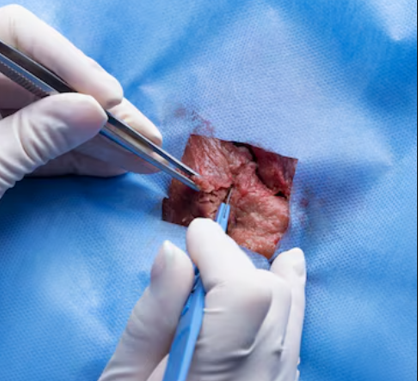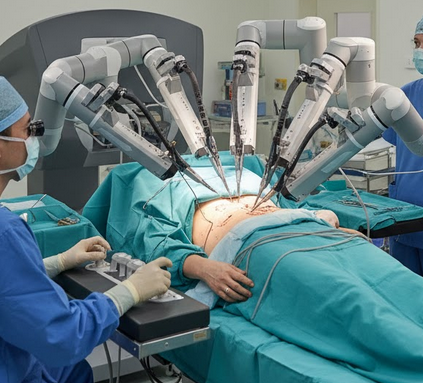Treatment Overview
Pelvic floor dysfunction (PFD) refers to a group of conditions involving the inability to correctly relax and coordinate the muscles of the pelvic floor. This dysfunction can cause symptoms such as pelvic pain, urinary or fecal incontinence, pelvic organ prolapse, and discomfort during sexual intercourse.
In Korea, pelvic floor dysfunction evaluation is part of advanced gynecologic diagnostic programs offered in leading hospitals and specialty clinics. The evaluation uses a multidisciplinary approach that combines physical examination, imaging, and functional testing to identify the root cause of symptoms. Korean women’s health specialists emphasize precise diagnosis to tailor treatment plans, whether they involve physical therapy, medication, or surgical intervention.
Korea is globally recognized for offering state-of-the-art pelvic floor evaluation services, combining innovative technology with patient-focused care.
Purpose & Benefits
The purpose of pelvic floor dysfunction evaluation is to diagnose the specific cause of pelvic symptoms and develop a personalized treatment plan. Benefits include:
- Accurate diagnosis through advanced imaging and functional testing.
- Comprehensive symptom mapping to address multiple aspects of pelvic floor health.
- Early detection of pelvic floor disorders, preventing worsening of symptoms.
- Customized treatment tailored to the patient’s condition and lifestyle.
- Improved quality of life through targeted intervention.
PFD evaluation is especially beneficial for women experiencing chronic pelvic pain, urinary urgency or incontinence, pelvic organ prolapse, or pain during intercourse.
Ideal Candidates
Pelvic floor dysfunction evaluation is recommended for women who:
- Experience chronic pelvic pain.
- Have symptoms of urinary or fecal incontinence.
- Notice pelvic organ prolapse or heaviness.
- Experience pain during sexual activity.
- Have pelvic floor muscle weakness after childbirth.
- Require pre-surgical pelvic floor assessment.
Korean medical centers offer evaluation services for women of all ages, including postpartum patients and those with complex gynecologic conditions. Many clinics provide specialized care for international patients, with English-speaking staff and tailored consultation services.
Possible Risks & Complications
Pelvic floor dysfunction evaluation is generally safe and non-invasive, but potential considerations include:
- Temporary discomfort during physical examination or testing.
- Minor pain during internal muscle evaluation.
- Rare allergic reaction if contrast agents are used for imaging.
- Emotional discomfort discussing sensitive pelvic health issues.
Korean hospitals emphasize patient comfort, using private consultation rooms, gentle examination techniques, and thorough patient education to minimize discomfort.
Techniques Used
Korea employs advanced diagnostic methods for pelvic floor dysfunction evaluation, including:
- Pelvic floor physical examination to assess muscle tone and strength.
- 3D pelvic floor ultrasound for high-resolution imaging of muscles and connective tissue.
- MRI pelvic floor imaging for detailed soft tissue analysis.
- Urodynamic testing to assess bladder and urethra function.
- Electromyography (EMG) for muscle activity assessment.
These techniques ensure a holistic and precise evaluation, helping clinicians develop targeted treatment plans.
Recovery & Aftercare
Since pelvic floor dysfunction evaluation is diagnostic rather than surgical, recovery is immediate. Aftercare involves:
- Reviewing findings with the gynecologist or pelvic floor specialist.
- Following a personalized treatment plan, which may include pelvic floor physical therapy, medication, or surgery.
- Lifestyle recommendations to strengthen pelvic floor muscles and prevent recurrence.
Many Korean clinics also offer follow-up evaluations to track treatment progress and make necessary adjustments.
Results & Longevity
Pelvic floor dysfunction evaluation provides detailed results that guide treatment and improve long-term outcomes. By identifying the exact cause of pelvic symptoms, patients can receive targeted therapy, resulting in significant relief and improved pelvic health. The benefits of evaluation extend beyond diagnosis — they provide a foundation for sustained pelvic wellness through personalized care.
Treatment Process in Korea
The pelvic floor dysfunction evaluation process in Korea is highly patient-centered and efficient. It begins with a detailed consultation to assess symptoms and medical history. This is followed by:
- Physical examination of the pelvic floor muscles.
- Imaging studies such as 3D ultrasound or MRI.
- Urodynamic or electromyographic testing if indicated.
- Review of results with the specialist to formulate a treatment plan.
Korea’s advanced diagnostic centers stand out for their integration of the latest technology, multidisciplinary teams, and patient comfort. Clinics provide expedited scheduling, multilingual services, and a holistic approach to pelvic health, making Korea a leading destination for pelvic floor evaluation.
Cost Range
The cost of pelvic floor dysfunction evaluation in Korea varies depending on the complexity of testing. Typical costs include:
- Basic pelvic floor examination: ₩200,000–₩400,000 KRW ($160–$320 USD).
- 3D pelvic floor ultrasound: ₩500,000–₩800,000 KRW ($400–$640 USD).
- MRI pelvic floor imaging: ₩900,000–₩1,500,000 KRW ($720–$1,200 USD).
- Comprehensive evaluation packages: ₩1,200,000–₩2,000,000 KRW ($960–$1,600 USD).
Many hospitals offer package deals combining evaluation with treatment consultation for cost efficiency.
Popular Clinics in Korea
- Samsung Medical Center — Comprehensive pelvic floor health programs.
- Asan Medical Center — Advanced imaging and diagnostic capabilities.
- CHA Bundang Women’s Hospital — Specialized in pelvic health and postpartum care.
- Severance Hospital, Yonsei University — Leading pelvic floor imaging services.
- Gangnam Women’s Health Clinic — Personalized pelvic floor evaluation and treatment for local and international patients.




